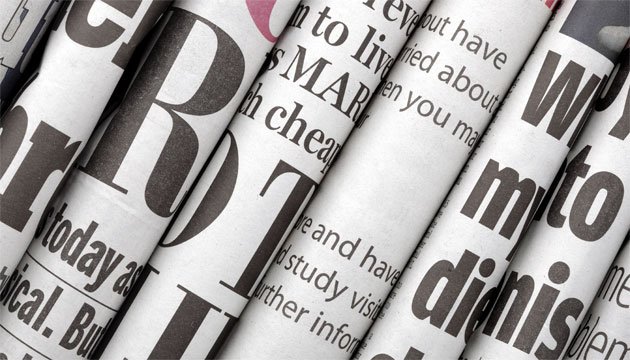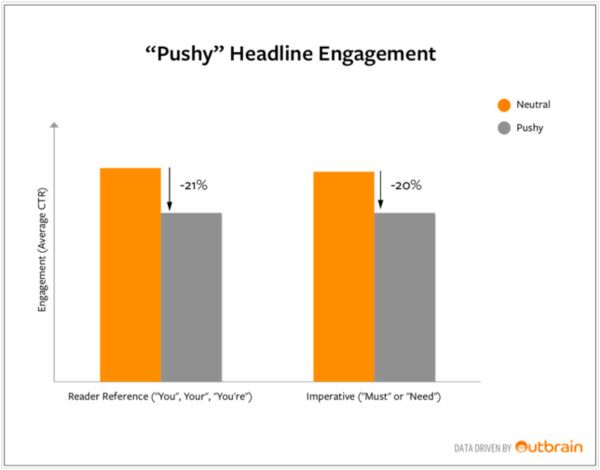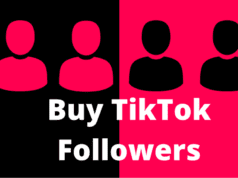
In such a content- and noise-filled digital world, grasping reader’s attention, let alone sustaining it for even minutes at a time, can prove to be quite a challenge. Even though society claims to not judge a book by its cover, we are all sizing up a piece of content by its headline. A headline is an opportunity for writers to not only instantaneously attract browsers and turn them into engaged readers, but to also guide them into deciding whether the content is worthy of their time. It sounds simple enough, so why do only about 20% of people read past the headline? (Source: Copyblogger)
An analysis of engagement on paid content headlines in our Outbrain network has revealed an interesting trend among consumers. It seems that the harder they are pushed to click, the more likely they are to avoid a headline altogether.
We investigated some commonly used words that could easily be perceived by readers as overly pushy, sales pitchy and, at worst, spammy. The chart below illustrates the negative effect of headlines that directly address the reader or make use of demands.

Titles that make references to the reader by including the word, “you” “your” or “you’re” performed 21% worse than titles that did not contain any of these words. The attempt to make readers feel as though they’re being spoken to directly appears to do more harm than good.
Titles containing an imperative (“must” or “need”) generated a 20% lower CTR (click-through-rate) than titles that did not contain either of these words. Readers appear to be resistant to words that demand action or attention. It may be that these words are more reminiscent of advertorial calls to action than editorial language or that their overuse in headlines over time has weakened their ability to convey a true sense of urgency.
As much as we want to drive readers to our content, it’s important to remember not to push them too much. The risk of having your content headline sound like a call to action is not only likely to end in lost clicks, but also likely to jeopardize audience trust. The headline should mirror the quality of the content that lies behind it.
This analysis was based on a sample of over 100,000 paid links that ran in Outbrain’s network between April and November 2012.
Got content ready to be discovered? Try Outbrain Amplify and get your content recommended on premium publisher sites across the web. Get Started Here.








